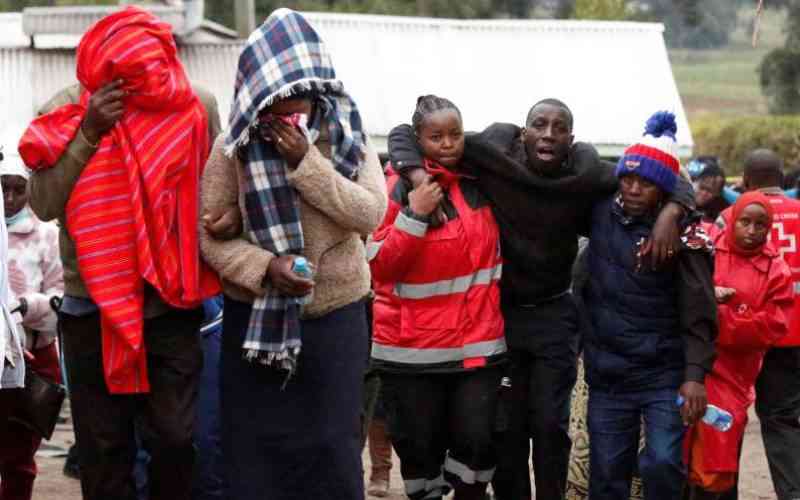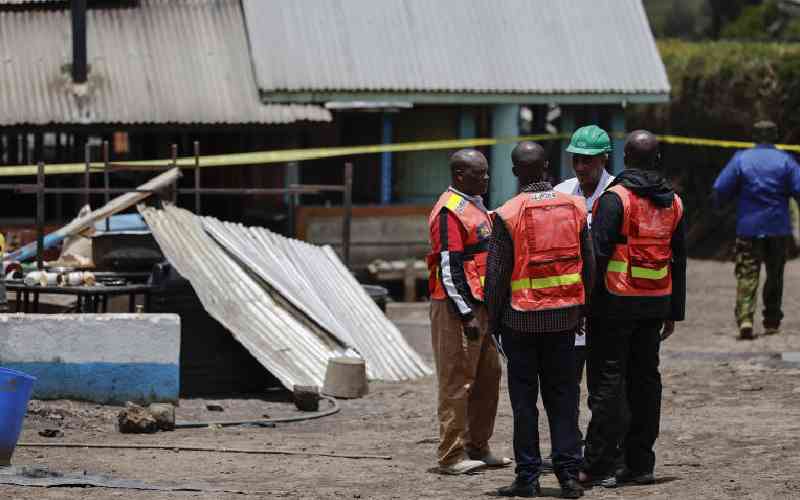NAIROBI: Climate change is a subject many have researched and written about, a few don’t believe while everyone suffers its reality of existence. Even the hardcore sceptics are on the verge of collapsing their hard stances that haze their gaze from reality. Meanwhile, climate scientists are undertaking more research work and studies globally, and recommending mitigation strategies.
Human interest
Despite the claims by scientists that the world is 4.54 billion years old, it was not until in recent centuries that humanity showed interest in the changing climate patterns. It has been observed globally that there are great climatic deviations from normal observations in weather history. More extreme weather events have occurred in the last century than in the former centuries. Such climatic catastrophes claim more lives today than any known natural cause of death.
Climate change casualties
It is estimated that by 2030, climate change will be responsible for 100 million deaths if no mitigation measures are put in place (Huffington Post, 26 Sept 2012). Already presently, climate change is claiming the lives of 5 million people through hunger, disease and air pollution and the toll could increase by 6 million per year ceteris paribus. Carbon-intensive economies bear the much responsibility in carbon emissions resulting in global warming which contributes to climate change.
Climate concepts
However, not all people believe climate change is real. So what is climate change? In defining climate change, various terms need be defined first.
Climate- defined as the averaged weather conditions over a place for a period of at least 30 years. The weather conditions include surface variables such as temperature, precipitation and wind.
Climate system- It comprises of a complex system of five major components: - atmosphere (gases), hydrosphere (water), biosphere (living organisms), cryosphere (ice) and the lithosphere (earth surface), and their interactions. The system evolves under its own dynamics and external influence such as vulcanicity, solar variations and human-induced forcing such as land-use change.
Climate variability-it is the statistical deviation in the mean state of climate events, referred to as anomalies, from long-term statistics related to a corresponding period. The short term may be a season, a month or a year.
Climate change- refers to statistically significant variation from either the mean state of climate or in its variability (defined above), persisting for an extended period, usually decades or longer (All definitions are WMO standard).
The UNFCCC definition
However, the United Nations Framework Convention on Climate Change (UNFCCC), an international environmental treaty in its definition attributes climate change to anthropogenic causes and climate variability to natural causes, as “a change of climate which is attributed directly or indirectly to human activity that alters the composition of the global atmosphere and which is in addition to natural climate variability observed over comparable time periods.’’ This definition may count due to the fact that natural systems restores themselves to former states after a deviation.
Therefore, a key difference between climate change and variability is in the persistence of ‘anomalous’ conditions over time over a given place. In other words, what used to be rare occur more frequently and vice-versa.
Spatial and temporal scales
Nevertheless, care must be taken not to confuse climate change and variability. Different places experience difference ranges of variability. For example, what is normal to Nairobi Kenya in terms of frequency of precipitation (low variability) may be ‘abnormal’ to Cairo, Egypt (high variability). Hence, no single weather event such as drought can be attributed to human-induced climate change, given current status of scientific understanding.
Occasionally, an event or a sequence of event that has never been witnessed or recorded before occurs, such as the Friday 13 December 2013 snow in Egypt! Yes, a severe cold snap caused several cities Cairo included to find themselves in a liberal coating of snow- something that has never happened well over a century. Yet even that could be part of natural climate variability. If such an event does not repeat itself for over 30 years over the same period, we may consider that as an exceptional year, and not a herald of climate change.
Stay informed. Subscribe to our newsletter
Only a persistent series of unusual events taken in the context of regional climate parameters can suggest a potential change in climate behavior has occurred.
An insight worth noting is that atmospheric dynamics knows no boundaries, and whatever is affecting one part of the globe affects the other directly or indirectly. In addition, whatever is injected into the atmosphere in Europe or America would finally end up in our atmosphere.
(Additional information from World Meteorological Organization, WMO)
 The Standard Group Plc is a
multi-media organization with investments in media platforms spanning newspaper
print operations, television, radio broadcasting, digital and online services. The
Standard Group is recognized as a leading multi-media house in Kenya with a key
influence in matters of national and international interest.
The Standard Group Plc is a
multi-media organization with investments in media platforms spanning newspaper
print operations, television, radio broadcasting, digital and online services. The
Standard Group is recognized as a leading multi-media house in Kenya with a key
influence in matters of national and international interest.
 The Standard Group Plc is a
multi-media organization with investments in media platforms spanning newspaper
print operations, television, radio broadcasting, digital and online services. The
Standard Group is recognized as a leading multi-media house in Kenya with a key
influence in matters of national and international interest.
The Standard Group Plc is a
multi-media organization with investments in media platforms spanning newspaper
print operations, television, radio broadcasting, digital and online services. The
Standard Group is recognized as a leading multi-media house in Kenya with a key
influence in matters of national and international interest.









